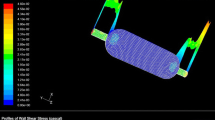Abstract
Cartilage regeneration is a major challenge for researchers because cartilage tissue has limited innate regenerative ability. Encapsulation within an alginate gel has been used widely for 3D scaffolds to generate cartilage-like tissue, but alginate gels have limitations such as poor mechanical properties. In this study, we fabricated alginate microfibers for human septal chondrocyte (HSC) encapsulation and identified the conditions that result in the optimal mechanical properties of the alginate microfibers. In vitro experiments showed that HSCs encapsulated within alginate microfibers maintained >90% viability for 7 days, and the 140μm condition was more effective in terms of HSC proliferation than the 330 and 520μm conditions. In vivo, HSCs differentiated gradually into cartilage tissue over 4 weeks in immunocompetent mice. Importantly, the alginate-encapsulated HSCs were isolated and protected from the host immune response despite xenograft implantation.
Similar content being viewed by others
References
Goldring, M.B. & Goldring, S.R. Articular cartilage and subchondral bone in the pathogenesis of osteoarthritis. Ann. N. Y. Acad. Sci. 1192, 230–237 (2010).
Lee, K.Y. & Mooney, D.J. Hydrogels for tissue engineering. Chem. Rev. 101, 1869–1879 (2001).
Chung, C. & Burdick, J.A. Engineering cartilage tissue. Adv. Drug Deliv. Rev. 60, 243–262 (2008).
Naumann, A. et al. Tissue engineering of autologous cartilage grafts in three-dimensional in vitro macroaggregate culture system. Tissue Eng. 10, 1695–1706 (2004).
Shikani, A.H. et al. Propagation of human nasal chondrocytes in microcarrier spinner culture. Am. J. Rhinol. 18, 105–112 (2004).
Miot, S. et al. Effects of scaffold composition and architecture on human nasal chondrocyte redifferentiation and cartilaginous matrix deposition. Biomaterials 26, 2479–2489 (2005).
Vinatier, C. et al. Engineering cartilage with human nasal chondrocytes and a silanized hydroxypropyl methylcellulose hydrogel. J. Biomed. Mater. Res. A 80, 66–74 (2007).
Aigner, J. et al. Cartilage tissue engineering with novel nonwoven structured biomaterial based on hyaluronic acid benzyl ester. J. Biomed. Mater. Res. 42, 172–181 (1998).
Guo, J.F. et al. Culture and growth characteristics of chondrocytes encapsulated in alginate beads. Connect. Tissue Res. 19, 277–297 (1989).
Paige, K.T. et al. De novo cartilage generation using calcium alginate-chondrocyte constructs. Plast. Reconstr. Surg. 97, 168–178; discussion 179-180 (1996).
Paige, K.T. et al. Injectable cartilage. Plast. Reconstr. Surg. 96, 1390–1398; discussion 1399-1400 (1995).
Rabanel Jean-Michel, et al. Polysaccharide hydrogels for the preparation of immunoisolated cell delivery systems. Polysaccharides for Drug Delivery and Pharmaceutical Applications 934, 305–339 (American Chemical Society, 2006).
Kim, B. et al. Fabrication of cell-encapsulated alginate microfiber scaffold using microfluidic channel. J. Manuf. Sci. Eng. 130, 21016–21016 (2008).
Kuo, C.K. & Ma, P.X. Ionically crosslinked alginate hydrogels as scaffolds for tissue engineering: part 1. Structure, gelation rate and mechanical properties. Biomaterials 22, 511–521 (2001).
Smidsrod, O. et al. Alginate as immobilization matrix for cells. Trends Biotechnol. 8, 71–78 (1990).
Author information
Authors and Affiliations
Corresponding author
Rights and permissions
About this article
Cite this article
Shin, J.H., Jung, J.H., Nam, H. et al. Implantation of encapsulated human septal chondrocytes into immunocompetent mice using alginate microfibers. BioChip J 9, 67–75 (2015). https://doi.org/10.1007/s13206-014-9109-8
Received:
Accepted:
Published:
Issue Date:
DOI: https://doi.org/10.1007/s13206-014-9109-8




